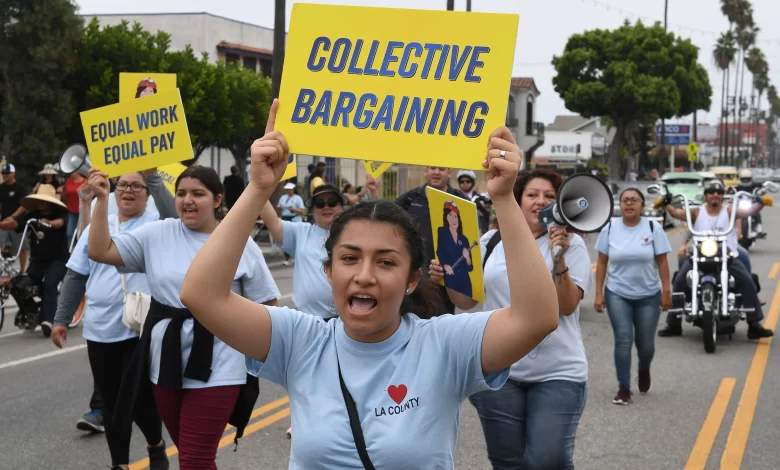From Labor Struggles to Legal Rights – A History of Workers’ Comp

The journey from labor struggles to legal rights in the domain of workers’ compensation unfolds a compelling narrative of societal progress and the changing landscape of employee protections. Delving into the historical foundations of this evolution reveals a tapestry woven with the sacrifices and triumphs of the workforce. As we explore the milestones and pivotal moments that have shaped this narrative, a deeper understanding of the intrinsic link between labor movements and legislative frameworks emerges, shedding light on the enduring relevance of workers’ comp in today’s workplace landscape.
Origins of Workers’ Compensation
Workers’ Compensation originated as a system designed to provide financial protection for workers who were injured on the job. This system aimed to safeguard workers’ rights by ensuring that they received compensation for medical expenses and lost wages resulting from workplace injuries. It also established employer responsibility regarding creating a safe working environment and providing adequate training to prevent accidents.
The concept of Workers’ Compensation emerged from the recognition that workers faced significant risks while performing their job duties, and that they deserved support if they were harmed in the course of their work. By placing the onus on employers to take reasonable precautions to protect their employees, this system helped shift the focus towards prioritizing workplace safety and minimizing hazards. Through the implementation of Workers’ Compensation laws, workers gained a legal recourse to seek redress in case of work-related injuries, thereby promoting a more equitable relationship between labor and management.
Early Labor Movements
The establishment of Workers’ Compensation marked a pivotal point in labor history, setting the stage for the emergence of early labor movements focused on advocating for improved working conditions and fair treatment of workers. During this period, workers began to recognize the power of collective action and the importance of forming unions to negotiate with employers for better wages, hours, and working conditions. Union formation became a key strategy for workers to amplify their voices and address grievances through collective bargaining.
Early labor movements played an essential role in shaping the labor landscape by pushing for legislative reforms and labor laws that aimed to protect workers’ rights. Through collective bargaining, workers gained the ability to negotiate contracts that outlined their working conditions and benefits. These movements laid the foundation for future labor rights initiatives and paved the way for the development of modern labor unions. Overall, early labor movements were instrumental in advancing the rights and protections of workers, ultimately leading to a more equitable and just society.
Industrial Revolution Impact
With the onset of the Industrial Revolution, profound transformations swept through the labor landscape, reshaping work processes and employment dynamics. The shift from agrarian societies to industrialized urban centers led to the proliferation of factories where mass production became the norm. However, this rapid industrialization came at a cost to workers, as factory conditions were often harsh and dangerous.
Worker safety was a major concern during this period, with long hours, unsafe machinery, and unsanitary working environments posing significant risks to workers’ well-being. The focus on maximizing output and profits sometimes took precedence over ensuring the safety and health of workers. As a result, injuries and even fatalities were common occurrences in many factories.
The Industrial Revolution’s impact on worker safety laid the groundwork for future labor movements that would advocate for better working conditions and protections for workers. It highlighted the need for regulations and laws to safeguard workers from exploitation and harm in the rapidly changing industrial landscape.
First Workers’ Comp Laws
The inception of the first workers’ compensation laws marked a pivotal moment in the history of labor rights and protections. These laws established compensation structures that aimed to provide financial support to workers who were injured or disabled on the job. The primary focus was on ensuring that workers received proper medical care and lost wages reimbursement in case of work-related accidents.
Employer responsibilities under these early laws included providing a safe working environment, implementing safety measures, and carrying adequate insurance to cover workers’ compensation claims. Employers were legally obligated to compensate employees for work-related injuries regardless of fault, shifting the burden of proof from the worker to the employer.
Expansion and Amendments
During the period of expansion and amendments in workers’ compensation laws, significant changes were made to broaden coverage and enhance protections for workers. As the workforce evolved and new industries emerged, expansion challenges arose, prompting the need for legislative updates to address these issues. One of the key focuses during this time was to guarantee that workers’ compensation laws encompassed a wider range of occupations, including those in high-risk sectors such as construction, manufacturing, and healthcare.
Legislative updates were implemented to adapt to the changing landscape of work and to provide better support for injured workers. These changes included adjustments to coverage limits, the addition of new benefits, and the clarification of processes for filing claims and receiving compensation. Additionally, amendments aimed to strengthen enforcement mechanisms to make sure that employers complied with the regulations and provided adequate support to their employees in case of work-related injuries. The period of expansion and amendments marked a significant advancement in workers’ rights, setting the foundation for a more extensive and inclusive workers’ compensation system.
Role of Unions
Unions play an essential role in advocating for workers’ rights within the field of workers’ compensation laws. Their influence is significant in shaping the legal framework that governs how injured or ill workers are supported. Through collective bargaining, unions negotiate with employers to make certain that workers receive fair compensation, proper medical care, and rehabilitation services in case of work-related injuries or illnesses.
Union influence on workers’ compensation laws has been pivotal in securing various protections and benefits for employees. By representing the collective voice of workers, unions have been able to push for improvements in compensation rates, better access to healthcare services, and stricter enforcement of safety regulations in the workplace. Additionally, unions often provide valuable support to workers ensuring that their rights are upheld and that they receive the assistance they are entitled to. Overall, unions continue to play an important role in safeguarding the well-being and rights of workers in relation to workers’ compensation.
Modern Workplace Protections
In the domain of contemporary workplaces, ensuring robust and up-to-date protections for employees is paramount to fostering a safe and equitable work environment. Workplace safety is a fundamental aspect of modern workplace protections. Employers are required to adhere to strict safety regulations to prevent accidents and injuries. This includes providing proper training, maintaining a hazard-free environment, and implementing safety protocols.
Employee benefits are another vital component of modern workplace protections. Benefits such as healthcare coverage, paid time off, retirement plans, and disability insurance contribute to the overall well-being of employees. These benefits not only attract top talent but also enhance employee satisfaction and loyalty.
In today’s rapidly evolving work landscape, staying current with workplace protections is essential to adapt to changing needs and challenges. By prioritizing workplace safety and offering competitive employee benefits, organizations can create a positive and supportive work environment that values and protects its most valuable asset – its employees.
Conclusion
In summary, the journey of workers’ compensation from labor struggles to legal rights has been a monumental shift in workplace protections.
From the early labor movements to landmark court cases, the evolution of workers’ comp laws has greatly improved working conditions and guaranteed employer responsibility for safe workplaces.
This transformation, akin to a roaring river carving its path through history, underscores the crucial role of labor advocacy in shaping modern workplace rights and protections.
More info can be found here.





